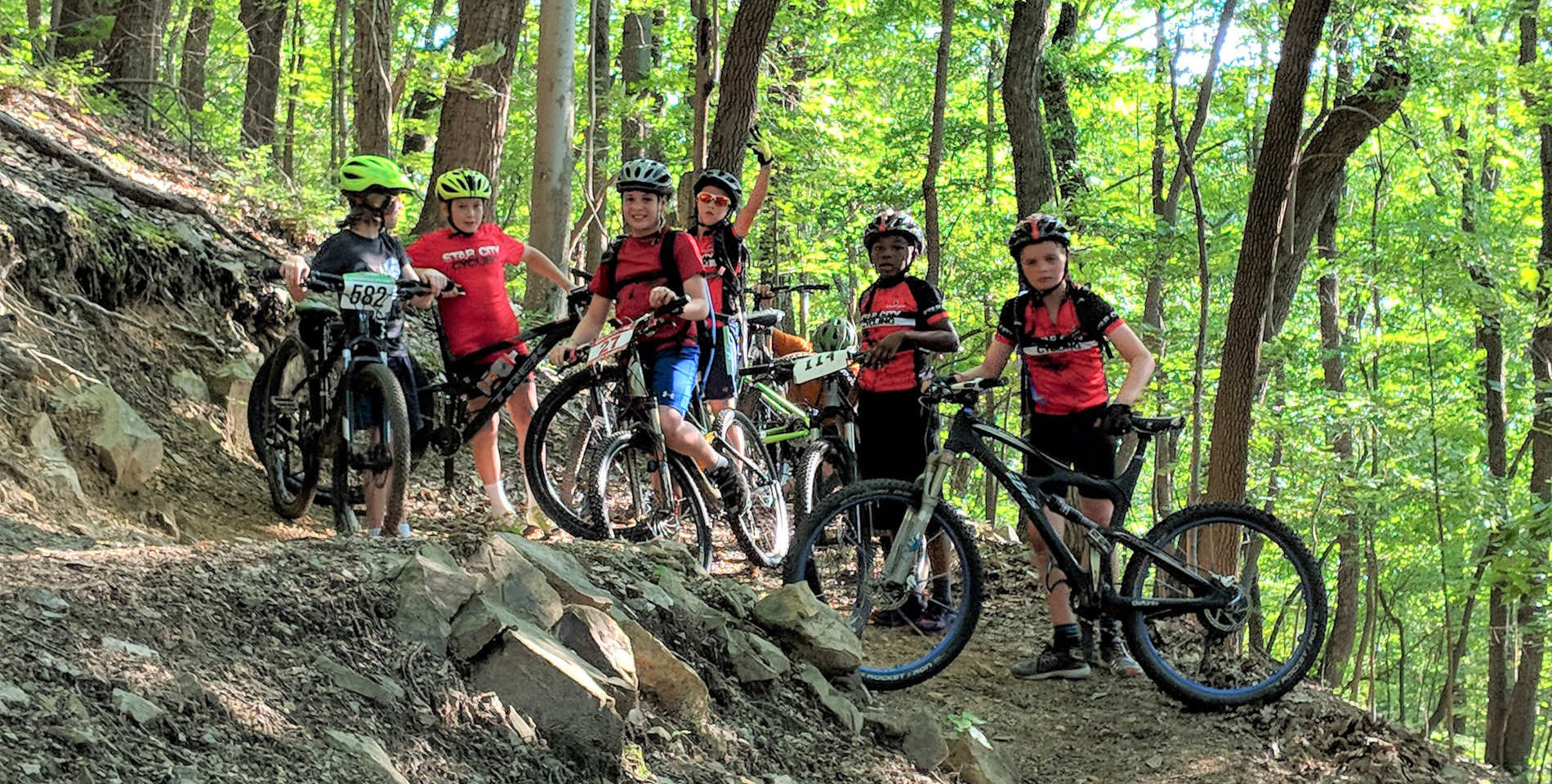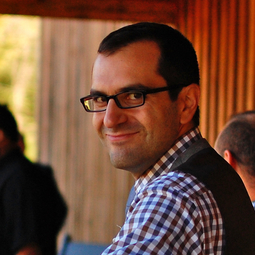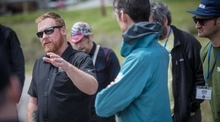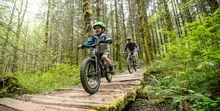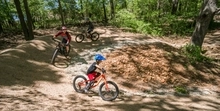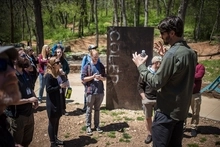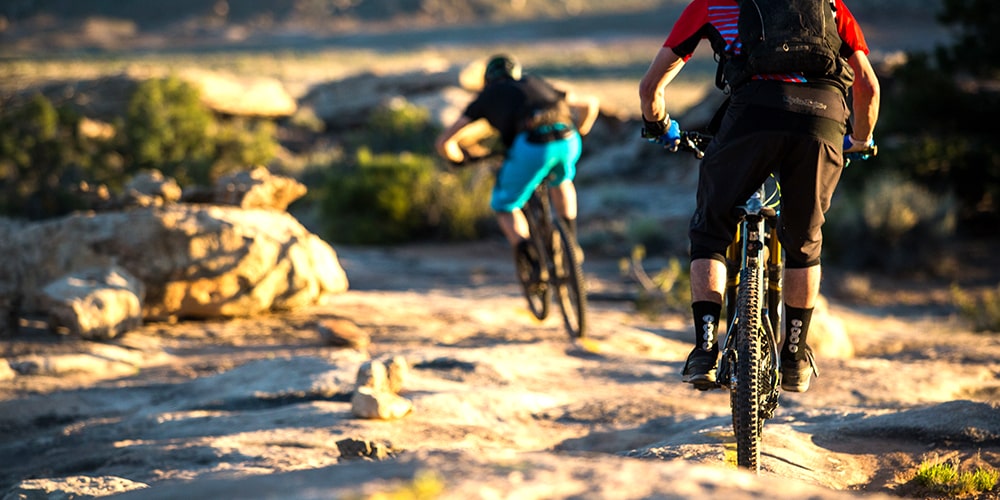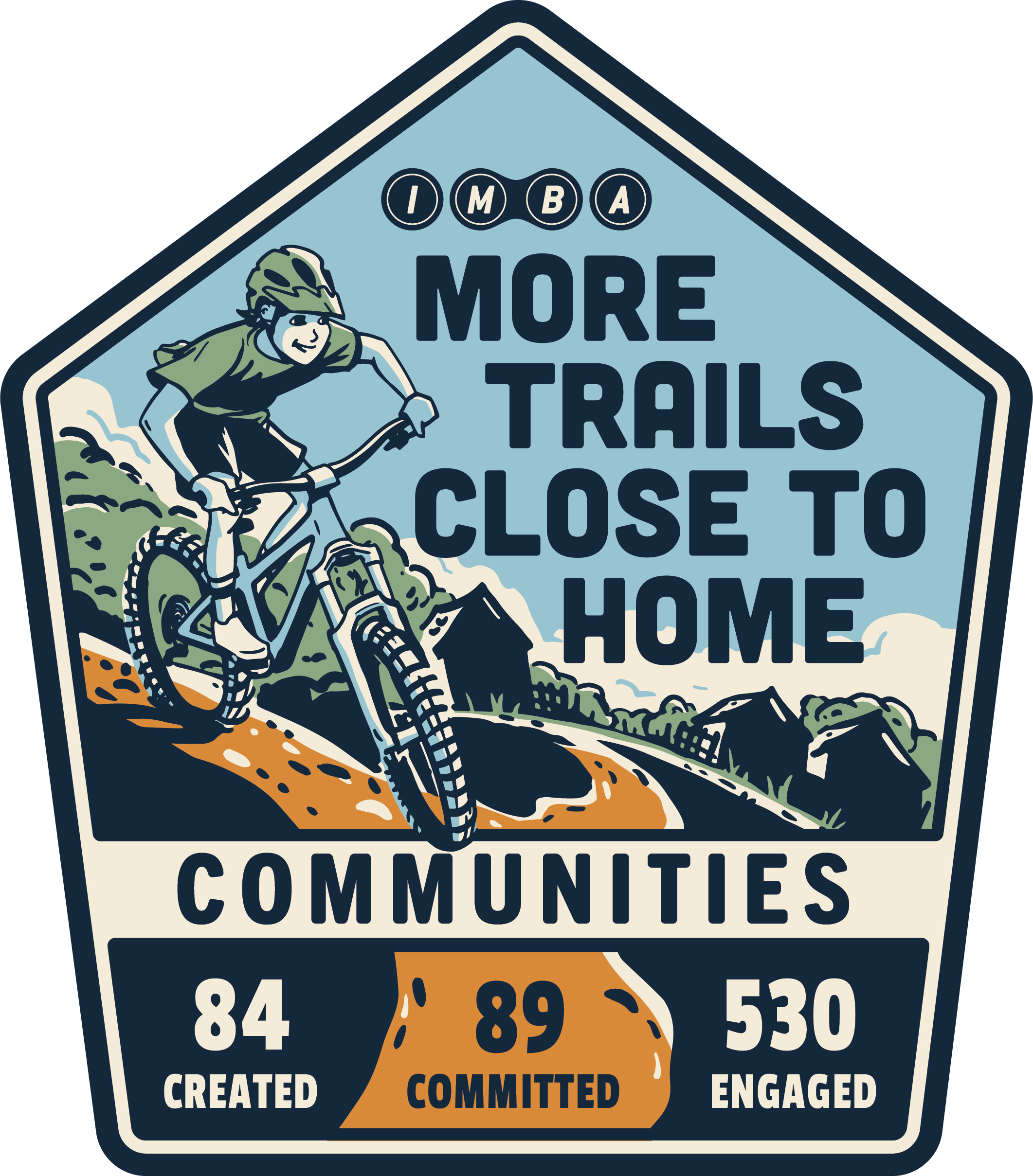Authors of Trail Development Guide Share More
This is part three of a conversation between Amanda Carey, NICA President, and Kent McNeill, IMBA CEO. Links to the other parts follow below.
Where are NICA teams currently practicing? Describe the range of facilities in use today.
Amanda Carey:
For NICA teams there are definitely some consistent things, e.g. most teams practice on green and blue trails. But NICA teams need the ability to divide kids by skill and age group. Ideal trail systems have blues and greens, and probably a little bit of black trails, open space and parking. Having some variety in the trail network is not only great for coaching, it's great for splitting kids up based on how they feel on the day and then their skills and abilities.
We have places with access to trails, but a lot of our teams aren't practicing on trails at all; they're setting up short courses in fields and parks. Mountain biking doesn't take mountains and it certainly doesn't take trails all the time, but where we see that sweet spot of engagement is when we have a team that has the ability to go to a trail network – it just increases the fun.
Races are entirely different – some days we are trying to figure out how to put 1,500 racers on a race course in one day so the event production takes a whole different level than team practice. The events are what really brings the community together and gives them the opportunity to give their best.
➤ How do your community trails rate? Take IMBA's Trail Development Self Assessment
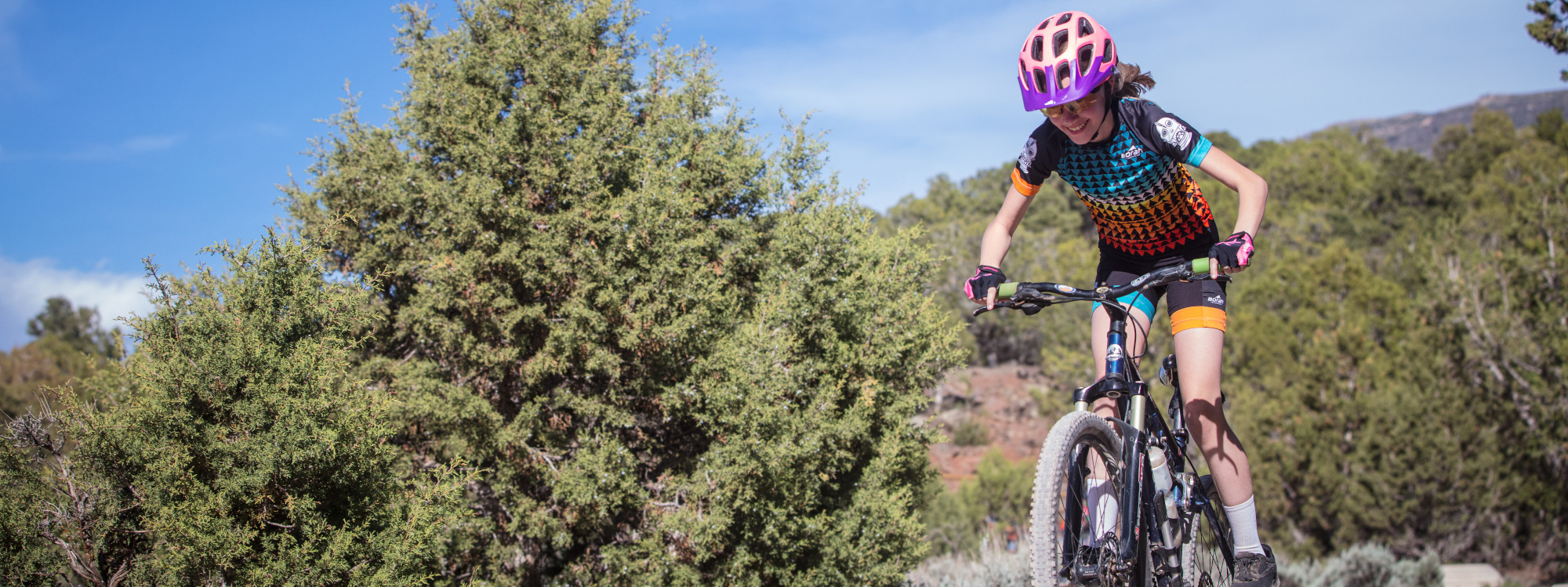
How and when did Teen Trail Corps begin? Today, is it equal parts trail advocacy, creation and stewardship? What should participants expect to gain from, and commit to, the program? How can folks learn more?
AC:
When we started Teen Trail Corps in 2014, the goal was to inspire and train our future trail advocates. We have a responsibility as trail users to give back to trails and to create and maintain the places to ride. Kids that play traditional sports are used to showing up at a baseball field or a basketball court or a soccer field that has been created, built, funded and maintained for them. There's so much public funding of other sports that we knew that there was a deep need for us to teach that trails are a privilege and we have to be good users and stewards. The foundation of Teen Trail Corps was to make sure that we were teaching a responsibility to take care of and advocate for the places that we use and to be conscious of the impact that we have on other users, on the land and on the environment.
In 2022 alone, NICA teams counted a total of 33,000 maintenance hours on 531 trails. The basis of Teen Trail Corps is to inspire teams to do service and to be advocates by writing letters, showing up at meetings, asking respectfully for trails and more places to ride. We are trying to inspire the next generation of advocates because we know kids are a huge part of the future of this sport.
The Pennsylvania league right now has one of the most vibrant and long-standing Teen Trail Corps programs in all of our leagues. They recently have acquired a total of $300,000 in grant funding from the Pennsylvania Department of Conservation and Natural Resources (DCNR) due in part to the impact in excess of $800,000 that NICA teams have had on Pennsylvania trails and recreation through volunteer service hours.
Kent McNeill:
Scratching in the dirt was advocacy in the beginning of the sport. Because it was such a value-add to land managers, it was a budget stretcher from a maintenance standpoint. What other activity, what other user group, builds and maintains their own infrastructure? Like you said, advocacy is evolving and even maintenance is evolving around us.
A lot of the more advanced systems and types of infrastructure get outside of volunteer skill sets to maintain. Volunteers still add value on the stuff that’s in their sweet spot, but parks and land managers are seeing the need to have paid staff with maintenance and some of the new types of infrastructure. I like the the idea around advocacy changing. One thing that really stood out to me as I engaged with our local NICA league was the power of youth voice and and having youth learn to advocate to go to a public meeting to talk about wanting to be outside and off screens and connected to nature and being active. It's really hard to deny the power of that youth voice and advocate perspective. It's really hard for someone to make that political and it's really hard for it not to be a bipartisan and community-wide momentum unlockers to have the kids advocating for that and wanting that asset.
AC:
The tone of a public meeting takes a totally different tack when you have teens that are well prepared and inspired – they know that they have the power to make change and to ask for something that they can contribute to. That's what we're trying to teach in NICA: so many lessons, not just mountain bike racing.
Sometimes folks just think about racing fast on the weekends, but we are really trying to create cyclists and mountain bikers for life. So much of that is having an involvement and an attachment to the culture of the sport and that's where our programs like the Grit Program, Adventure Program and Teen Trail Corps come in – we're giving different avenues for kids to be involved in this sport and attachment from that emotional, cultural space that is very very different than just showing up riding your bike and leaving.
So much of cycling is that the participants are also the fans and that the ones who are participating in it are also the ones getting the work done. Seeing seeing kids just have that a-ha moment (I've been coaching now for nine years and have seen that progression) where they they get that introduction through NICA and they really understand that that they can have an impact, that they can have a say in how this trail is designed, what their future experience looks like, whether a trail drains well or whether it's directional or all those things. It's such an impactful thing for a kid to see that they have the ability to have a voice and to to use that voice to make some positive change.
Share some stories about NICA program impact on communities and individuals. What are common barriers to programs starting, growing, succeeding, or barriers to individual participation? Do you have any recommendations, tools or guidance that can help overcome those barriers? 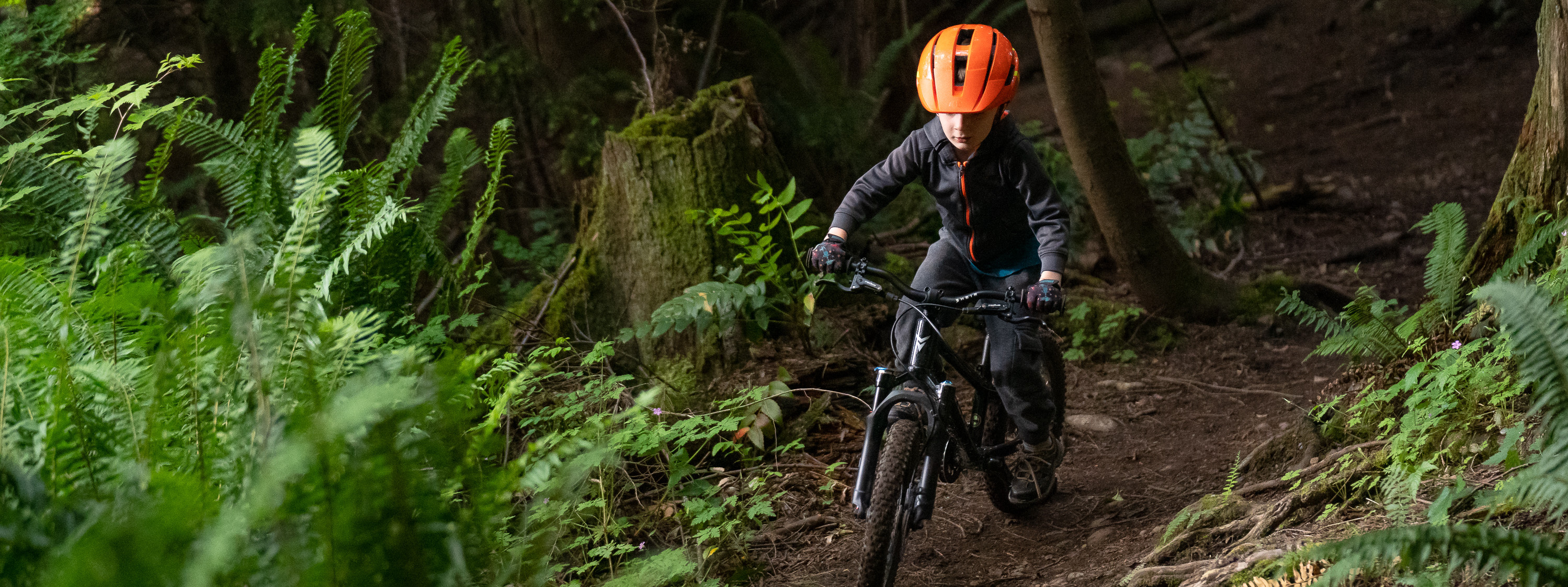
AC:
I've been coaching here now in Teton Valley Idaho for about nine years and prior to that I was also the executive director of Mountain Bike the Tetons, the local IMBA chapter. We didn't have any beginner trails back then. What I have seen and experienced from the time we started our team nine years ago till now is literally every single year my sixth graders come in better and better. It is like night and day, the impact of just having those beginner and and entry-level trails built, because it's just dramatically changed – you can see it and the younger kids have an opportunity to have trails that are built at an appropriate level. They're stoked for the sport and their ability just skyrockets. I've seen that again and again and it's incredibly impactful.
There are so many stories! One of my most favorite ones: a coach in southern Utah started a team in a community that didn't have a lot of money, not a lot of trail access, not a lot of parental involvement but he really just started from this standpoint: “These kids need something and NICA is the thing that I can give to this community.” He not only started this team, he had support from so many teams in the Utah League giving equipment and funding – it wasn't even just from the league itself it was from the other teams in the community that knew that he wanted this help to start this team off. Now the team is thriving, they have all the resources they need. The more you surround yourself with the NICA community the more you realize that that's how it always operates but those stories are always fun and inspiring to see.
KM:
What a great testament, mountain biking is very community oriented and it's just ingrained in our nature to be that way. It's great to hear how those teams rallied around the help that was needed. We've seen it in our local league here too – if teams need things everybody's all hands in the middle, “How can we help?”
See parts one and two of Amanda and Kent's conversation on the IMBA blog, then get useful tools for your community on IMBA Resource Hub.
